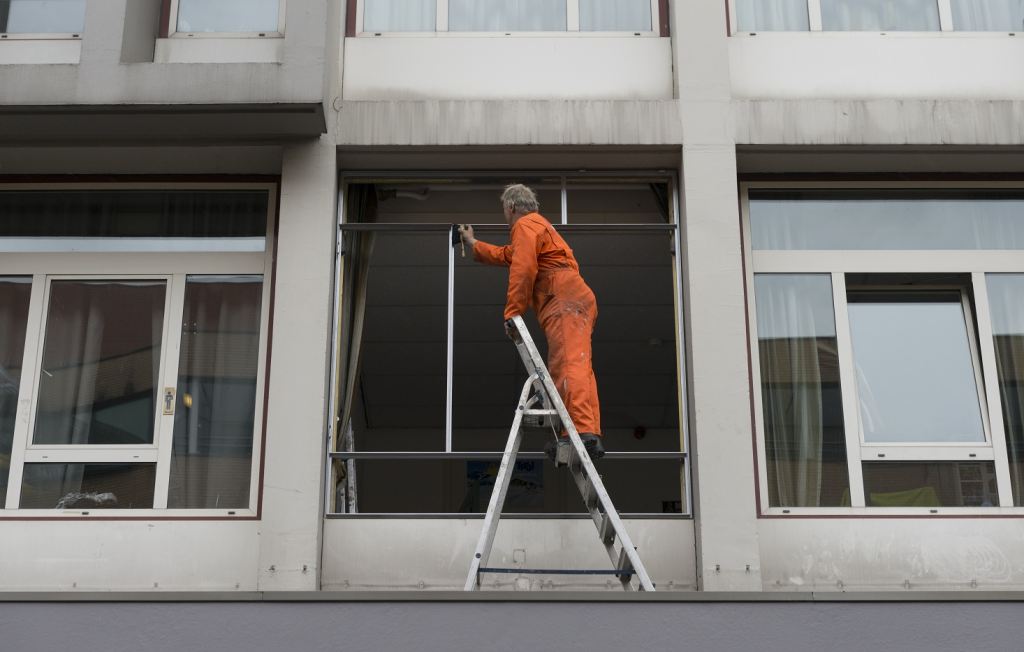
When John Körmeling was asked what he would like to change on the city of Eindhoven he replied: ‘I would hop in a bulldozer and demolish half the city.’ That seemed a bit ambitious. For the Dutch Design Week he settled on designing a new window frame for the Zustersflat in Eindhoven. We sat down with him to discuss his vision on the city of Eindhoven.
A bulldozer, really?
‘Well, if I could. I would run a bulldozer through the city and create some space for once in stead of creating a dense pile of concrete and bricks. But the plan soon come to a halt. I mean, do you have idea how expensive a second hand bulldozer on ebay would be? I decided to let that go for now.’
You ended up with a window frame.
‘I started to look at a smaller solution and ended up at the Zustersflat, which is a beautiful building, but something was missing there. In the early days the flat had some great window frames in it. They have been replaced with thick plastic frames. Which hardly leaves a window to look through. There is just a wall with some tiny holes in it now. I wanted to restore that.’
These days we see a lot of what I would call: Anxiety Architecture.
‘I settled on a light metal frame quite quickly. It is much thinner and leaves room for a lot more glass and light to go throug it. This is an hommage to old Dutch architecture. Which was much more designed towards the outside, it had an open feel to it. We see less and less of that in the modern cities.’
‘Those plastic frames once were installed because of technical reasons: isolation and warmth and so on. That is no longer neccesary. The steel frame has been coated with a brand of rubber. That is possible now, so there is really no need to be so careful in our designs anymore.’
What can the modern architects learn from the older generations?
‘These days we see a lot of what I would call: Anxiety Architecture, closed off buildings which protect the insider from the outside. Everything is flat and looks the same. In the fifties and the sixties that was different. Those guys (the architects) still had fun. Everything just pops out towards the outside world and everything seemed possible.’
‘A lot of the raw ambition and passion resembled a certain ‘wildness’. I think a lot of that died in the years that followed up until now. It makes me think of those futuristic clips we used to see, filled with wild ideas. Almost none of that came out and exists today.’
How can we get the ‘wildness’ back to our cities?
‘Try to mix the function of our buildings and terrains, this will give a much more vibrant feel to it. But on top of that: Creat open spaces, so people can breathe.’
‘Per example: When I got to the TU/e as a student, it was open. Everybody could drive through campus. Now, there is a gate on each side and you can only drive through if you either work or study there. I think it is repulsive to have a perfectly fine road and not use it for traffic, that is what it is built for.’
Read other articles about Dutch Design Week here.
Strijp-S has been opened up, does that make you happy?
‘Sure, in theory it is opened up. But in my eyes it is still closed off. Look at the roads, where do they lead? Traffic gets stuck there, and there is really no need at all for that. Sometimes I can’t help but feel that the city is designed in a way so the people in it will think it is busy and crowded.’
‘There are a lot of great buildings and spots in this city, but there packed together so much it is hard to see and appreciate its beauty. A bulldozer could definetely help in bringing out the best.’
For now, the Bulldozer will have to wait. During Dutch Design Week only the window frame can be seen by the public. At the moment of writing this, it was not yet sure whether Körmerling would receive a permit to put the frame in one of the actual windows.
But this doesn’t phase the passionate designer. Or does it. “I am all for just putting it in there. The measurements are right so why not? Oh, I might get arrested. Yeah, I’ll have to think about that a little.”
